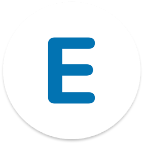This module allows CHWs to identify and register pregnant women in their villages. CHWs can provide health education tailored to the pregnant woman’s trimester of pregnancy and she can review pregnancy progress on the progress report. The tool prompts the CHW to schedule her follow up home visit and allows her to tell the pregnant woman when she needs to attend her next facility ANC visit.
The Antenatal Care (ANC) module for CHW’s works collaboratively with the CHW module. A nurse at a Health Center can see what has happened in CHW visits and seamlessly continue care.
There are 7 main activities in this module and they appear when appropriate in the pregnancy. The main activities are: Pregnancy Dating, Labs, Danger Signs, Birth Plan, Health Education, Appointment Confirmation, and Pregnancy Outcome.
Pregnancy Dating confirms the last menstrual period (LMP), which in turn informs the Estimated Due Date (EDD) and Estimated Gestational Age (EGA). Once seen at a Health Center, this information is confirmed by a nurse.
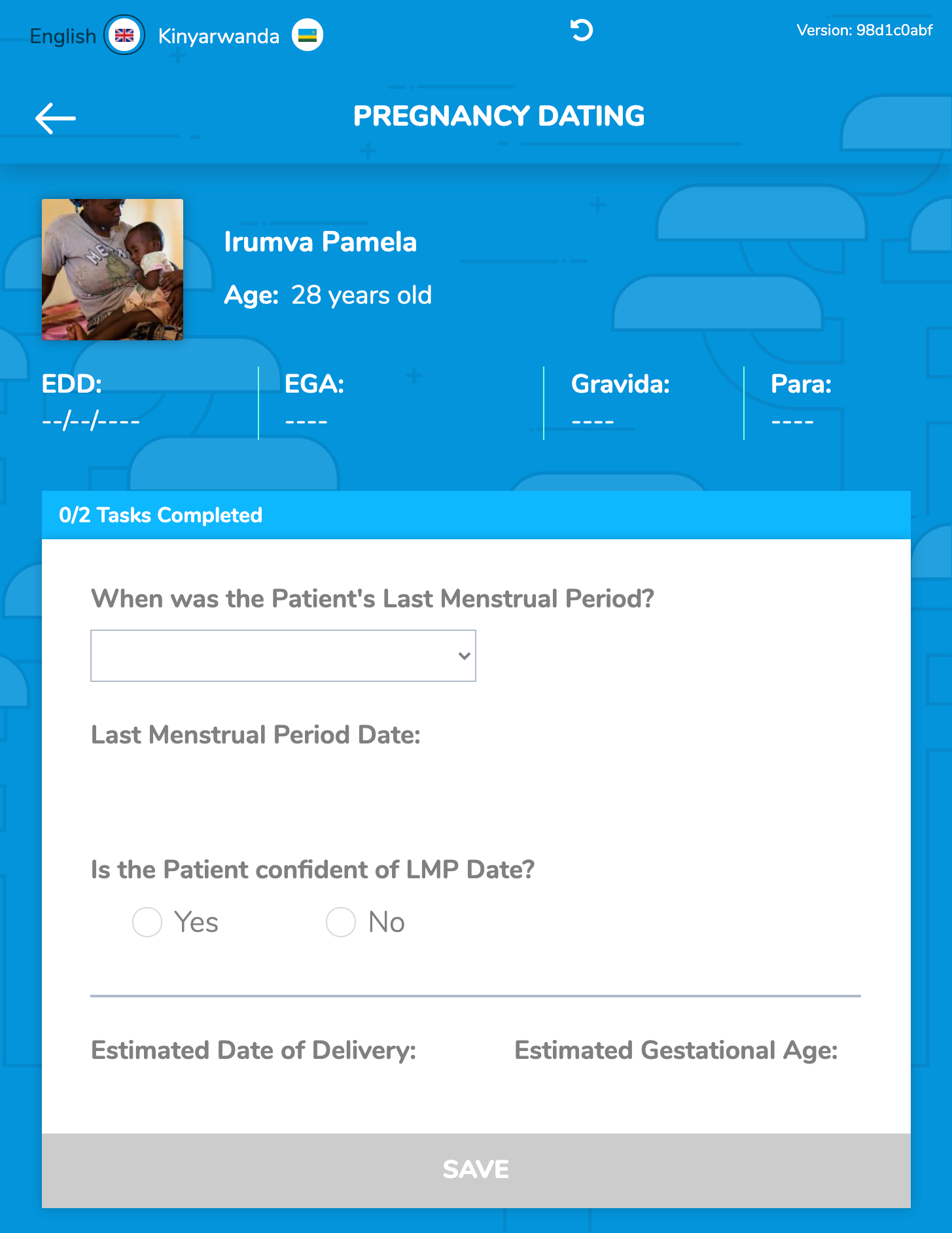
Labs are basic labs to confirm the pregnancy, such as a simple Pregnancy Test.
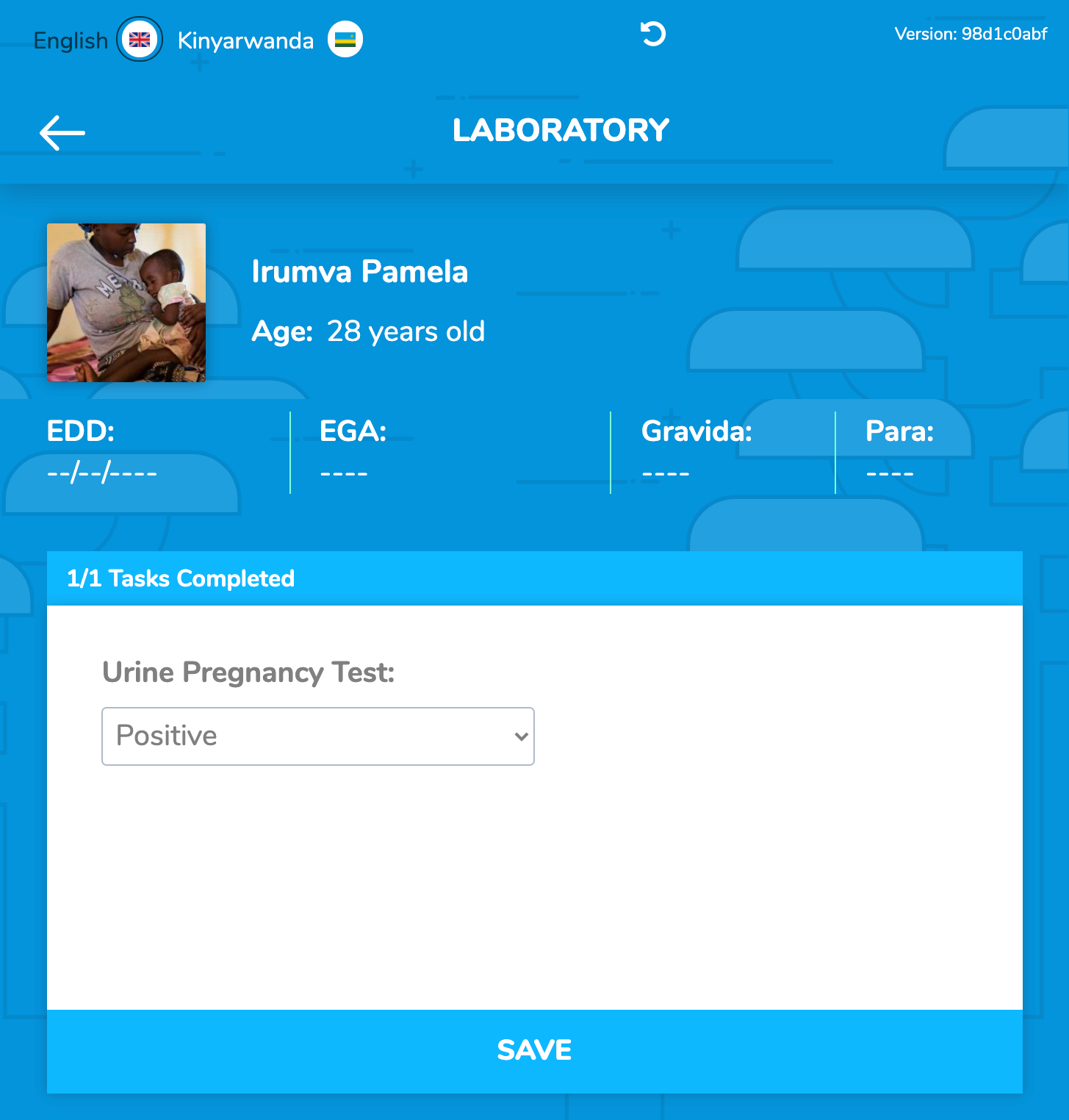
Danger Signs outlines if a mother is currently experiencing any danger signs which would implicate a larger issue and requires her to be seen at a Health Center immediately.
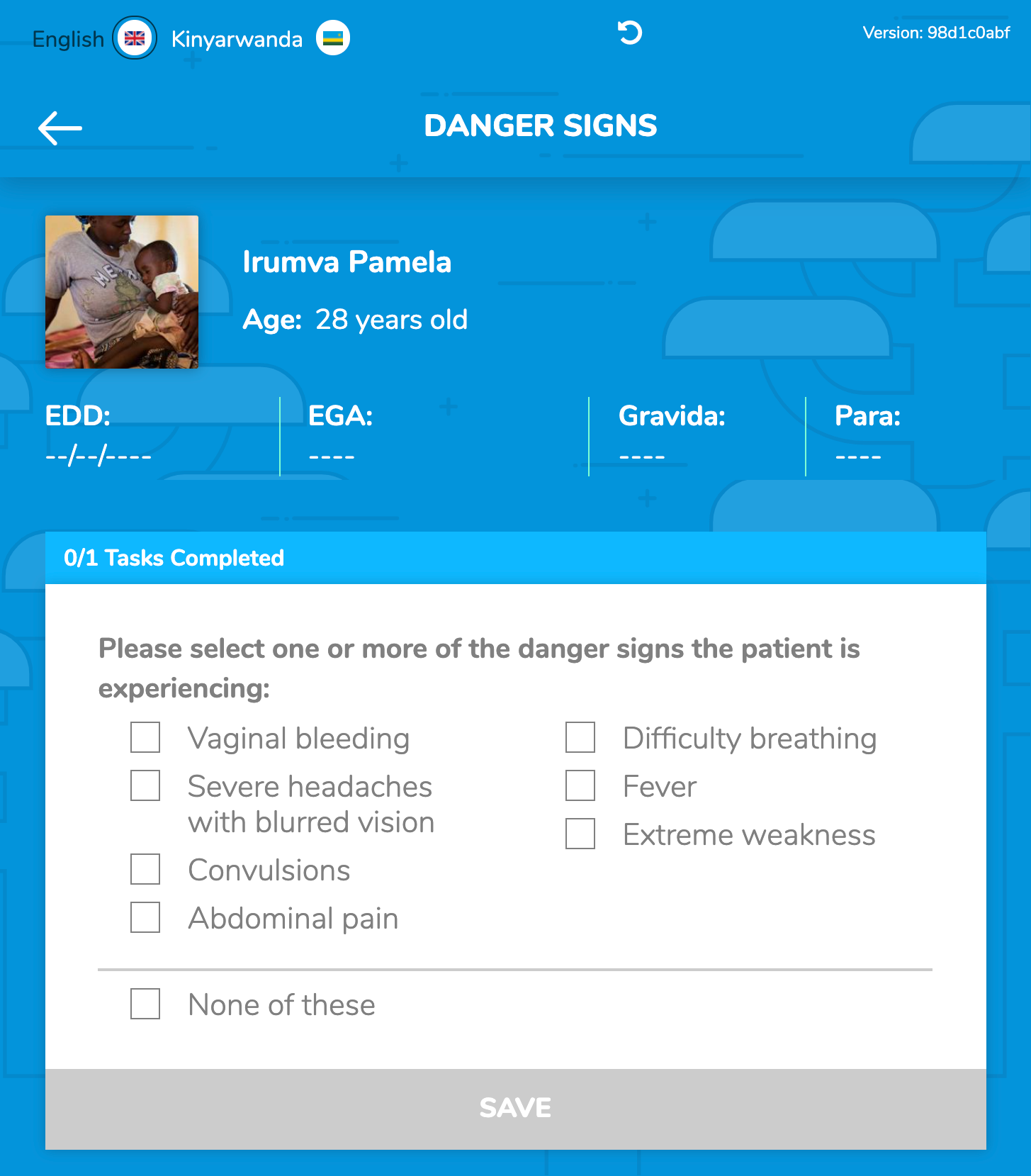
Birth Plan allows the CHW and the patient to discuss the intended birth plan, ensure the mother has all the essential items she needs, discuss post-partum family planning, and more.
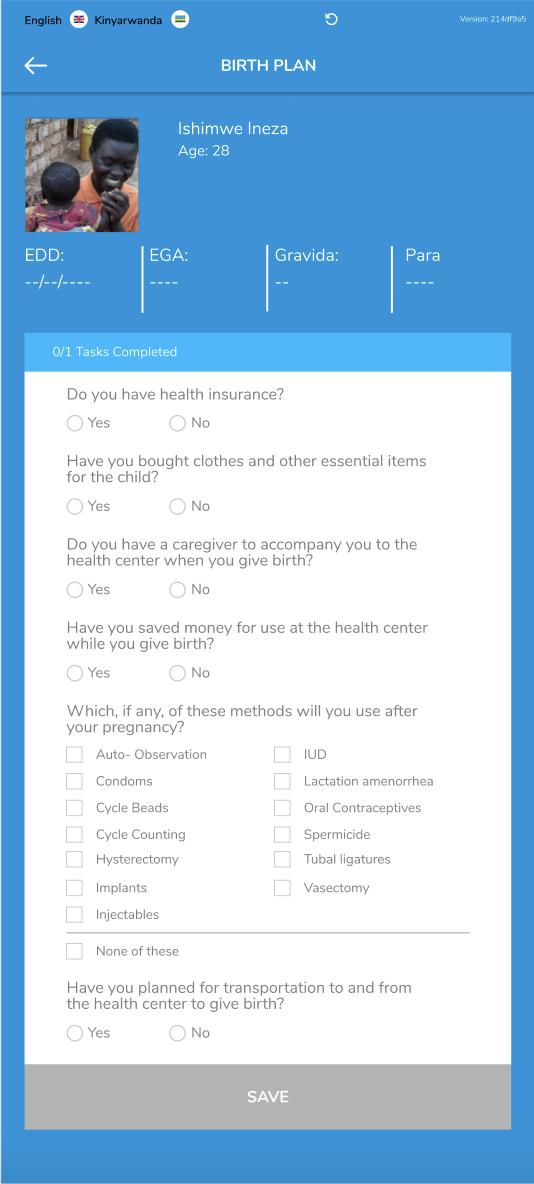
Health Education guides the CHW each visit on what topics to cover with the patient from what to expect during pregnancy to hemorrhaging.
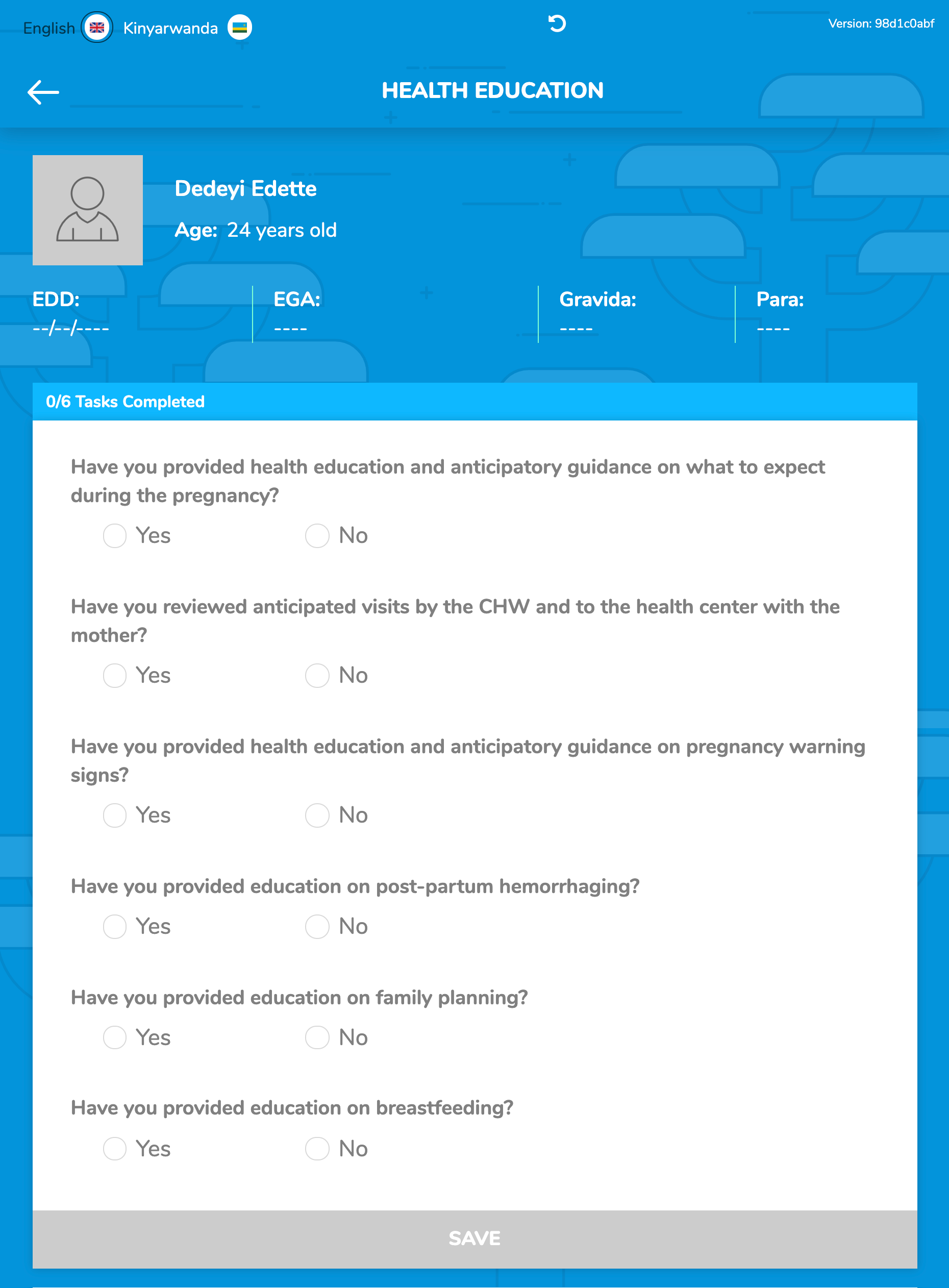
Appointment Confirmation allows the CHW to confirm an appointment at the Health Center was scheduled for their patient and, if not, schedule one for them.
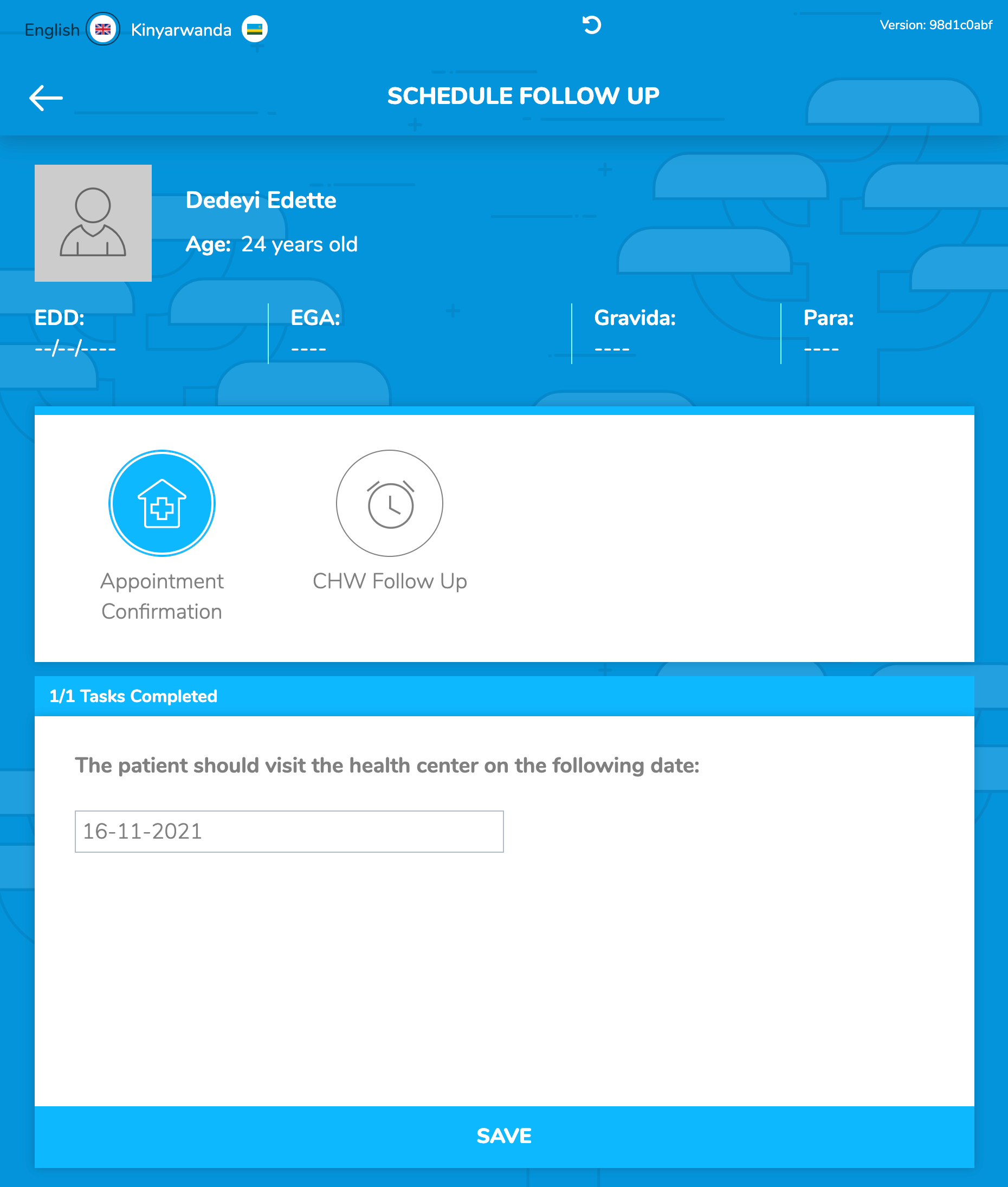
Pregnancy Outcome is performed post-partum and details any danger signs the mother or baby is experiencing and registers the newborn in the E-Heza system.
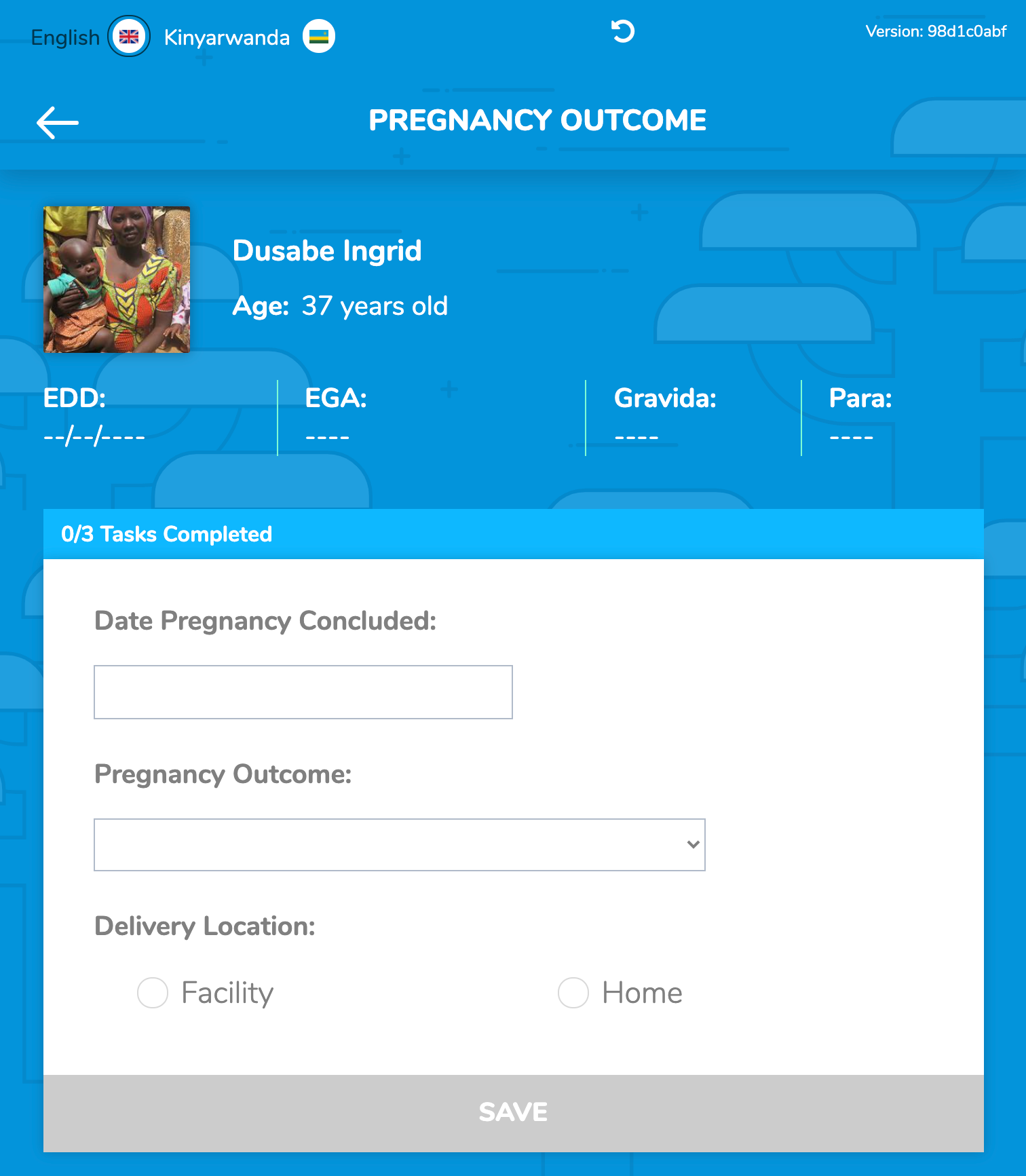
Last Modified: 1 January 0001
